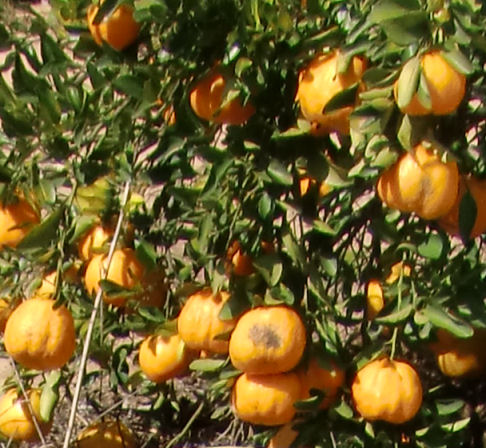

Citrus reticulata (Mandarin)
Mandarins are the most variable and the largest group of citrus plants in the family Rutaceae what fruit shape, size, taste the fruit and habit of plants. They are usually small, evergreen trees. The branches are just occupied by a few small thorns.
The leaves are lanceolate, on both sides tapering. The petiole is unclear from the blade down, the wings on the leaf stalk are just as narrow line evident. The leaf margins are minutely notched. The flowers are available individually or in few flowered inflorescences in the leaf. The sepals are overgrown, the five white petals free. The 20-25 stamens are in several groups together overgrown. The pencil is long and narrow. The fruits of mandarin are much smaller than oranges, they taste less acidic than the orange and have a distinctive intense, complex flavor. Its skin can be compared to other citrus peel easily, and they can also be vulnerable to external dry split segments, making it well with your fingers, peel and eat. Each fruit consists of nine segments, filled with the orange juice tubes. Each segment is surrounded by a thin membrane (endocarp) surrounding the whole fruit of a two-tier bowl. The inner layer of skin is white, the outer orange when ripe. The white layer is at the entrance to a network of fibers is reduced, it is the scientific name "reticulata" = grid-like. The S are oval, round at one end, pointed at the other. They are green inside. A large part of the seed is polyembryonic. In the tropics the fruit stays green, even when ripe.
The origin of the mandarins in India's northeast or southwest China's is presumed. The plants are grown in China since several thousand years cultivated, the secure first mention comes from the 12th Century before Christ. From the region of origin the tangerine spread over from India and Southeast Asia. To the 1st Millennium after Christ, the mandarin was cultivated in many southern prefectures of Japan's. The first mandarins which were introduced to Europe in1805 came from Canton, China to England.
In our garden there are several specimens of this species.

One of our mandarin trees (Citrus reticulata) in our
yard during the harvest time in July 2010.

Close-up view of the fruits of the mandarin in July 2010.
Updated
by Joachim Jaeck on August, 1st, 2010